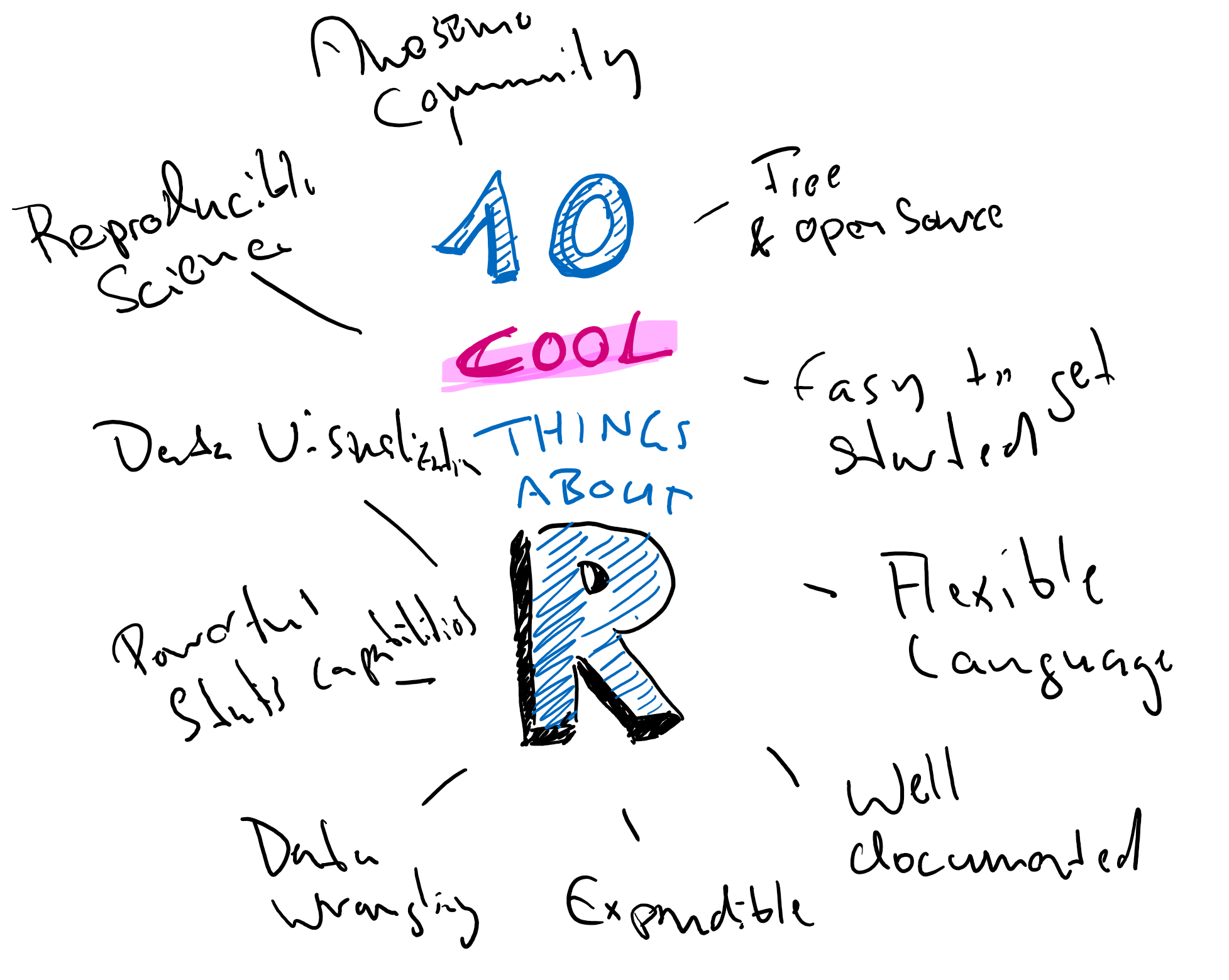The road ahead
Now that we know what R is and we have discussed some good alternatives, we will have a look at what speaks for learning R. There are many good reasons to learn R! In the next section of the book I will present ten of them, and we will also get hands-on with R. We will skip over some details for the sake of showing you the whole spectrum of what R has to offer and providing you with knowledge that is practically useful in as little time as possible.
We will use modern R with RStudio, RMarkdown the Tidyverse — more about that later. This will help us to focus on data analysis quickly, without worrying to much about some of the more technical aspects of programming.
Overview
Here are the 10 things we will look at:

1. Free and open source
We will learn about free and open source software and why it is great.
2. Easy to get started
We will install R and RStudio, setup an RStudio project, and start interacting with R in the console and by writing our first script.
3. A language made for data analysis
We will get to know the fundamental data types and data structures of R.
4. Well-documented
We will learn how to get help in R.
5. Expandable
We will learn how to add additional functions to R by installing packages and we will learn how to load data into R.
6. Powerful data wrangling functions
We will see how to transform data to prepare it for data analysis, join data.
7. Powerful data visualization functions
We will make a complex statistical graph.
8. Powerful statistical methods
We will run a statistical model.
9. Encourages reproducible research
We will make our analysis reproducible.
10. An awesome community
We will talk about where to find other R users and how to continue learning.
Conventions
Code formatting
In the text, names of R packages will look like this: {tidyverse}. R code will appear
inline like this print("Hello R!") or in a box, followed by its output like this:
[1] "Hello R!"Callout Boxes
There are three different types of callout boxes:
At the beginning of each chapter, I will list the things we are going to do and learn. You can use these to check your prior knowledge. Feel free to skip chapters that won’t provide any new insights for you.
This is an info box. It expands on a previous point with more details. It is not essential to read these, but it could help you to see the connections between concepts.
Data is singular
The word “data” will be used as a singular mass noun, as in “The data looks wonderful!”. I apologize to those whose grammatical intuition this offends. I just cannot help it!